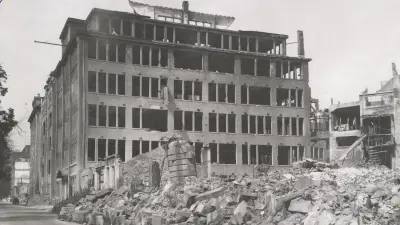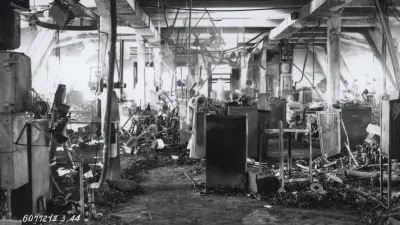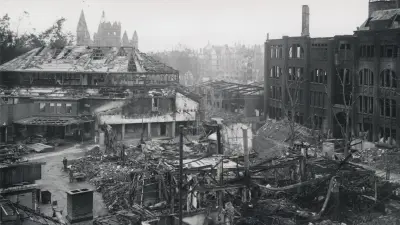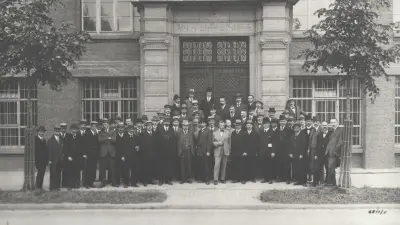The end of the war at Bosch.
“Zero Hour” in Stuttgart

For Stuttgart, the second world war ended with a quiet surrender on April 22, 1945. The city’s mayor officially handed the city over to the commander in chief of the French troops following their arrival just a day earlier. At Bosch and throughout the city, industrial production — which had already virtually ground to a halt anyway — was shut down immediately.
Having been severely damaged in air raids, the plants in Stuttgart and Feuerbach were only capable of working at limited capacity, and the lack of raw materials had become alarmingly acute.
In January 1945, Bosch still had some 22,000 associates. By May, following Germany’s surrender, that number had fallen to 817. In the final months of the war, one-quarter of the workforce had consisted of forced laborers who had been assigned to the company by the government. The responsibility for their fates was passed to the Allied authorities when the war ended. It would take many laborers years to return to their homes. Of the associates that remained, some 15,000 had to be let go because there was no more work for them.


The few remaining Bosch associates picked up shovels to begin rebuilding the company. Quite literally, they had to dig their way to their workplaces. Some 30 percent of the main plant in Stuttgart had been completely destroyed.
Much of the company’s production machinery had been moved to rural regions to escape the full brunt of the Allied air offensive, which had devastated German cities. The associates in Stuttgart not only had to clear away rubble and debris, but also to retrieve and reinstall the machinery that had been sent for safekeeping to more than 100 different outlying locations. Unable to obtain sufficient fuel for motor vehicles because of postwar shortages, associates used handcarts and other improvised means of transport to move small machines and components over distances of up to 40 kilometers. In the Bosch annual report, the board of management thanked the associates for their dedication.
“We would have succumbed in the face of the nearly insurmountable obstacles had not the vast majority of our associates, supported us in such an exemplary manner right from the very outset.”
Unusual first post-war products
Although the war was over, Bosch was still faced with scarcities of certain raw materials and with the restrictions imposed by the allied occupying powers. Production was very slow to resume. Initially, Bosch produced everyday items such as saucepans using the raw materials that were available. It did so partly to meet the urgent demand for these essential household goods in the bombed-out city, but also to provide work for its associates. Even for these mundane products, Bosch still applied its traditional standards, as a memorandum issued by the board of management in May 1945 confirmed: “Still, we do not want to produce cheap goods of average quality, but […] want to offer Bosch quality.”

Once again, it was the spark plug that re-ignited Bosch’s fortunes. After Germany had been divided into zones of occupation, the French troops handed Stuttgart over to the U.S. Army on July 8. The U.S. Army had an extensive fleet, and its vehicles soon needed new spark plugs and batteries — a golden opportunity for Bosch. Gradually, the restrictions on automotive technology production were lifted, and the most challenging period in Bosch’s history came to an end.

Author: Christine Siegel


